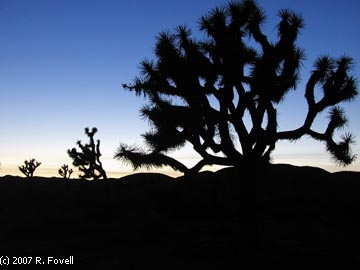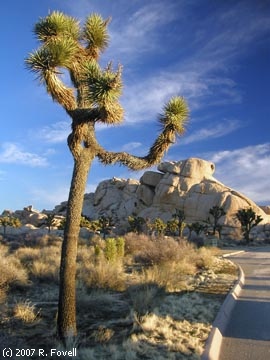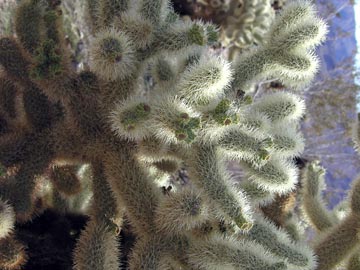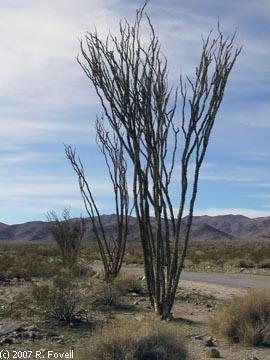Joshua Tree National Park
So, I created this cereus-inspired blog and by the second post already wander afield. Here are a few recent pictures from Joshua Tree National Park (JTMP), a world's end kind of place located in the desert east of Los Angeles. It's named for the ubiquitous Joshua Tree, so named by the Mormons and a (decidedly overgrown) relative of the lily (if memory serves). The rock band U2 released an album entitled "The Joshua Tree" some years ago.
Joshua Tree National Park holds interest for me owing to the fact that it straddles two distinct deserts, the Mojave (or high) desert and the Colorado (or low) desert. The difference between the deserts is striking; it's amazing the effect that several thousand feet of altitude can have. The Mojave desert is located at a higher elevation and is far from the barren wasteland one usually associates with the word "desert". Indeed, the Mojave comes alive with wildflowers in the spring, especially when conditions favor massive blooms of the state flower, the California Golden Poppy. In contrast, the Colorado desert south of the park is more desolate, being substantially hotter in the summertime owing in part to its lower elevation. South of JTMP is an area where General Patton's tank brigade trained prior to deployment. It is said the tank treads are still visible.
JTNP is bisected by a northwest-to-southeast road that gradually descends from the Mojave to the Colorado deserts. At its start, there are plenty of Joshua trees. Along the road, however, one notices the Joshuas becoming both scrawnier and more scarce. Yucca and ocotillo appear as the Joshuas fade away. Along the road is the Cholla cactus garden, home to some very interesting succulents.
Here is a picture of Joshua trees at sunset:

A Joshua tree near sunrise:

From the Cholla cactus garden:

Ocotillo from the low desert:

More of my photographs from Joshua Tree National Park at this link.



0 Comments:
Post a Comment
<< Home